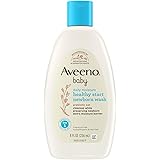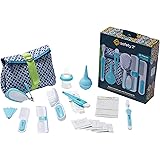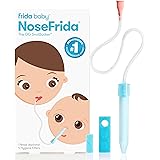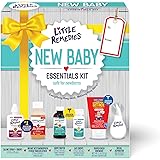Preparing for the arrival of a new baby is an exciting yet often overwhelming experience. From selecting the perfect crib to organizing countless tiny outfits, the journey into parenthood is filled with decisions. A common challenge faced by expectant parents is how to create a nursery that is not only adorable but also highly functional, organized, and conducive to a good night’s sleep for both baby and parent. Fortunately, a variety of effective strategies can be implemented to transform any nursery into an efficient and serene sanctuary. The video above offers valuable insights into practical solutions for nursery hacks, providing clever ideas for organization and storage that every parent can appreciate.
The transition of a toddler from a nursery into a “big kid” room, while also setting up a new space for an infant, presents a unique opportunity to refine and optimize every aspect of a child’s living environment. Lessons learned from a first child often reveal what truly makes life easier with a newborn. This post will expand upon the excellent tips shared in the video, delving deeper into how these nursery hacks can be applied to foster better organization, maximize space, and ultimately contribute to a calmer household.
Smart Furniture Choices: The Versatile Dresser
A perennial dilemma for new parents involves the purchase of specialized baby furniture, particularly changing tables. These items, while useful initially, often become obsolete relatively quickly as children grow. Consequently, the investment might seem less justifiable over time. A superior alternative, as highlighted in the video, involves opting for a standard dresser that can double as a changing station. This approach is widely considered to be a highly practical nursery hack.
Imagine if your changing table could evolve seamlessly with your child’s development. By securing a changing pad to the top of a dresser, a safe and functional changing area is easily created. Most changing pads are equipped with straps or non-slip bases, ensuring they remain firmly affixed to the dresser for the baby’s safety. When the child outgrows the need for diaper changes, the dresser retains its primary function as a storage unit for clothing and other essentials, thus offering significant long-term value. This versatility ensures that furniture pieces continue to be utilized for many years, negating the need for frequent replacements.
Maximizing Drawer Space with Organizers
The small size of baby clothes and accessories often leads to cluttered drawers, making it challenging to locate specific items quickly. Within a dresser, the strategic use of drawer organizers or baskets is highly recommended. These simple additions can dramatically improve accessibility and orderliness. It is common for little socks, hats, and mittens to become easily lost in larger drawers.
Furthermore, baskets facilitate a unique storage method for children’s clothing: rolling. While traditional folding is also an option, rolling clothes allows for a more compact arrangement and provides a clear view of all items at a glance when placed vertically within a basket. Even on busy days when precise folding is not feasible, clothes can be sorted into designated baskets, ensuring that pajamas, pants, and shirts are kept in their respective places. This system not only saves time but also reduces the mental load associated with maintaining an organized wardrobe.
The Foundation of a Functional Room: Washable Rugs
Children’s rooms are inherently prone to spills, accidents, and general wear and tear. Significant challenges are presented by messes that are difficult to clean, leading to stress for parents. Therefore, the selection of durable and easily maintainable furnishings is paramount. A particularly effective nursery hack for managing inevitable spills and messes is the use of machine-washable rugs, such as those offered by brands like Ruggable. The ability to simply throw a rug into a washing machine after an accident or routine cleaning is invaluable for maintaining hygiene and freshness.
The convenience of washable rugs extends beyond just ease of cleaning. They contribute to a healthier environment by allowing for regular removal of allergens and dust. Consequently, parents can have peace of mind knowing that their child’s play area is not only clean but also hygienic. This practical choice can save countless hours of spot cleaning and significantly prolong the life of the rug, making it an excellent investment for any family with young children.
Streamlining Baby Clothes: A System for Growth
It is a well-known fact that babies grow at an astonishing rate, especially during their first two years. This rapid progression through clothing sizes can quickly lead to an overwhelming accumulation of garments that no longer fit. To effectively manage this constant influx and efflux of clothing, a systematic approach is essential. A highly recommended nursery hack involves creating a two-bin system within the child’s room or a nearby storage area.
The first bin should be designated for clothes that have been outgrown. As soon as an item no longer fits, it can be immediately placed into this bin. Once full, the contents can be either donated, consigned, or saved for a future child, thereby preventing clutter in the main wardrobe. The second bin is intended for clothes that are currently too large but will fit in the near future. This is particularly useful for infant sizes, where parents often receive or purchase items in various stages of growth. By separating these items, parents are spared the frustration of searching for appropriately sized clothing, especially during urgent moments.
Picture trying to locate a specific onesie in the middle of the night, only to discover it is either too small or still too big. Such scenarios are easily avoided when clothes are logically sorted by size and season. This proactive management of clothing ensures that drawers and closets contain only garments that are ready to be worn, simplifying daily routines and minimizing stress.
The Power of Designated Spots and Labels
In any household, particularly those with children, the accumulation of various items can quickly lead to disorder. Babies, in particular, come with an array of products—diapers, wipes, creams, lotions, and toys—all of which require a designated storage spot. Order and accessibility are significantly enhanced when every item has a specific place where it belongs. This fundamental principle of organization is an indispensable nursery hack.
Even after a space has been meticulously organized, it can be challenging to recall the precise location of every item, especially during moments of distraction or urgency. Consequently, the use of labels is strongly encouraged. While it may seem unnecessary to label bins or drawers within one’s own home, labels serve as visual cues that reinforce the organizational system. They not only guide parents but also aid other caregivers in maintaining order. Furthermore, the act of labeling helps to solidify the mental map of where everything is kept, thereby promoting consistency in tidying up and making it significantly easier to find what is needed, when it is needed.
Leveraging Vertical Space for Storage
In many nurseries, floor space is a premium, especially once larger furniture items like cribs and gliders have been placed. Therefore, maximizing vertical storage is an intelligent nursery hack that can significantly increase a room’s capacity without occupying additional floor area. Walls, which are often overlooked, can become valuable real estate for storage solutions. Floor space can be preserved when vertical areas are utilized for organizing books, toys, and other essentials.
For instance, wall-mounted acrylic bookshelves or even repurposed IKEA spice racks, as cleverly demonstrated in the video, are excellent for storing board books. This method allows books to be displayed face-out, making it easier for children to see and select their preferred stories, simultaneously encouraging early literacy. Beyond books, vertical storage can include wall-mounted baskets for small toys, pegboards for hanging various items, or narrow shelving units. These solutions not only free up floor space but also add a decorative element to the room, creating a more visually appealing and organized environment.
The Secret to Better Baby Sleep: Blackout Window Treatments
One of the most critical factors influencing a newborn’s sleep quality, and by extension, a parent’s well-being, is the level of darkness in the room. Optimal sleep environments are created when ambient light is minimized, signaling to the baby’s developing circadian rhythm that it is time for rest. This is an essential nursery hack for promoting longer and more consistent sleep patterns. However, achieving true darkness can be surprisingly difficult with standard window coverings.
Many parents initially opt for blackout shades or curtains, which are designed to block light passing directly through the fabric. However, a common issue arises from light seeping in around the edges of these coverings, even with careful installation. Consider the frustration of a baby being woken prematurely by sunlight trickling through the sides of a supposedly “blackout” setup. For comprehensive light exclusion, a combination of solutions is often required. Cordless shades are highly recommended for children’s rooms, as exposed cords pose a significant safety hazard for babies and toddlers.
To truly black out a room, one innovative nursery hack involves supplementing blackout curtains with magnetic strips. These can be discreetly attached to the edges of the curtains and corresponding points on the window frame or sill, creating a tight seal that prevents any light from entering through the gaps. While this may seem like an “extra” step, the difference it makes in achieving a truly dark sleep environment is often profound. A darker room has been shown to contribute to much better sleep for children, which in turn leads to more rested and happier parents. This commitment to optimizing the sleep environment is an investment in the entire family’s well-being.











